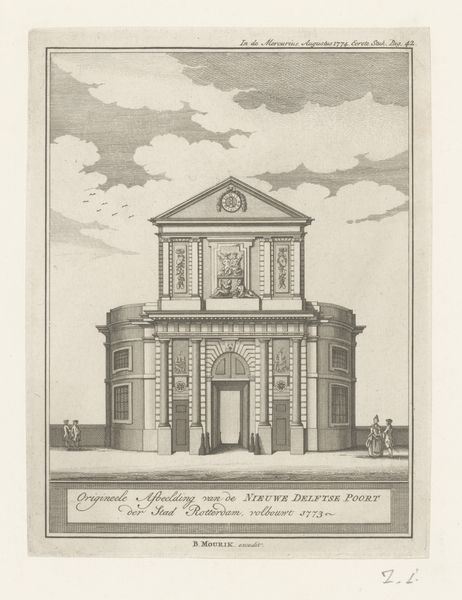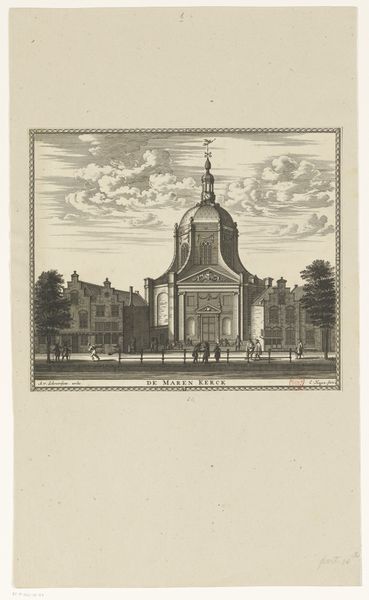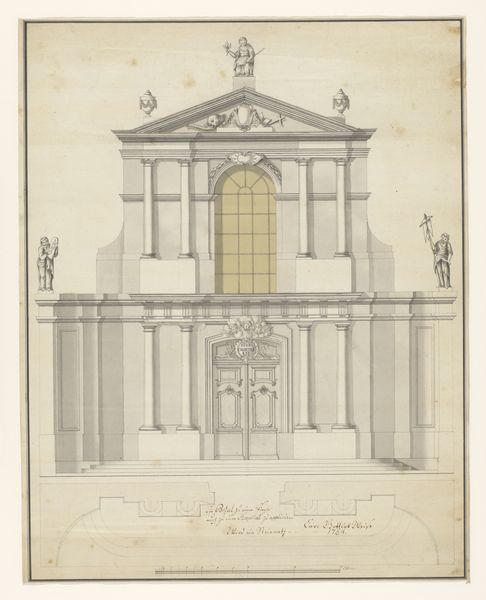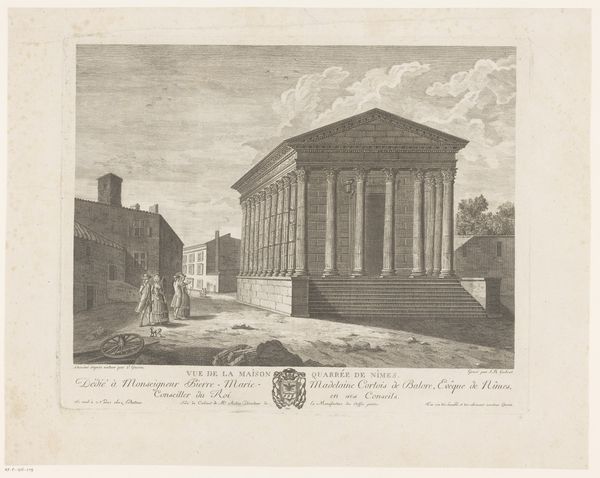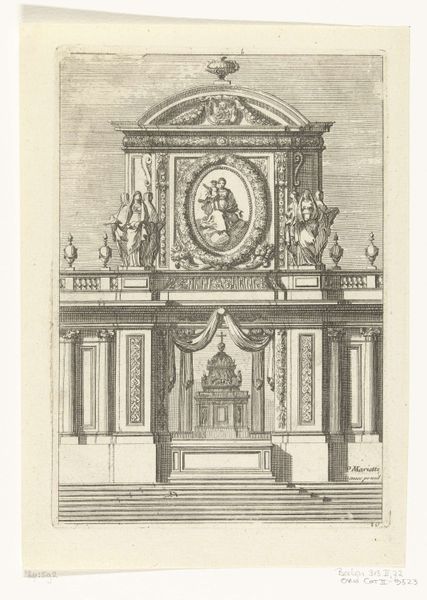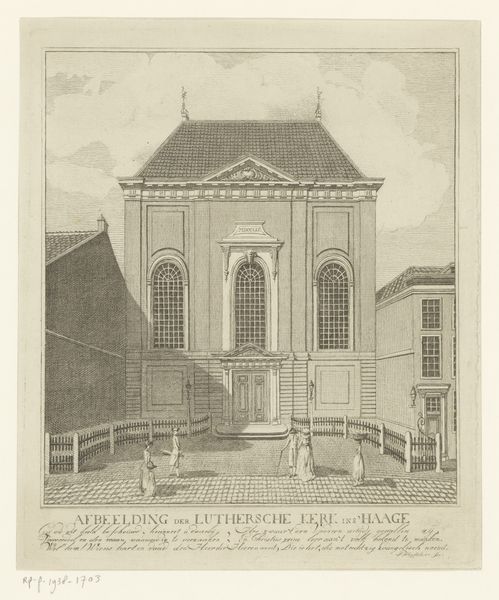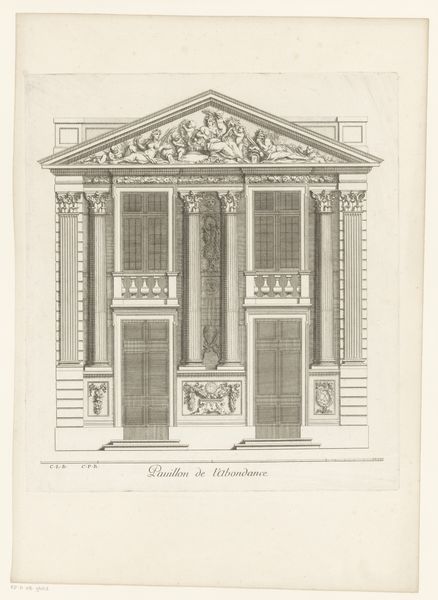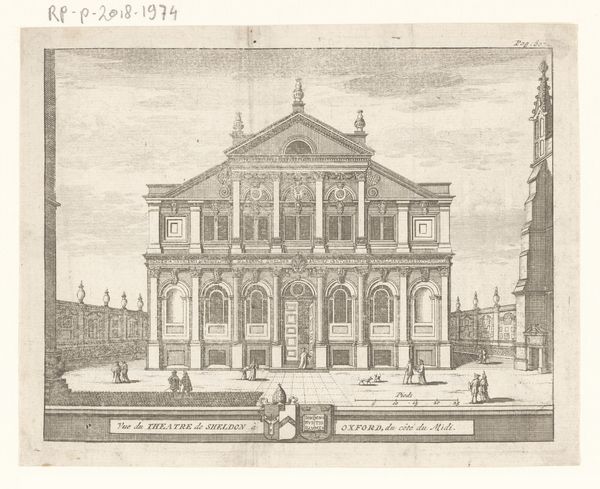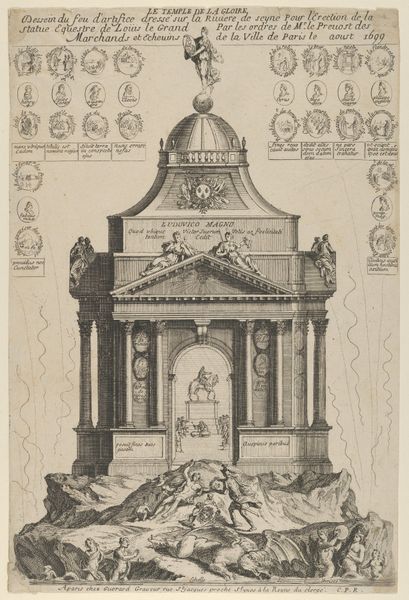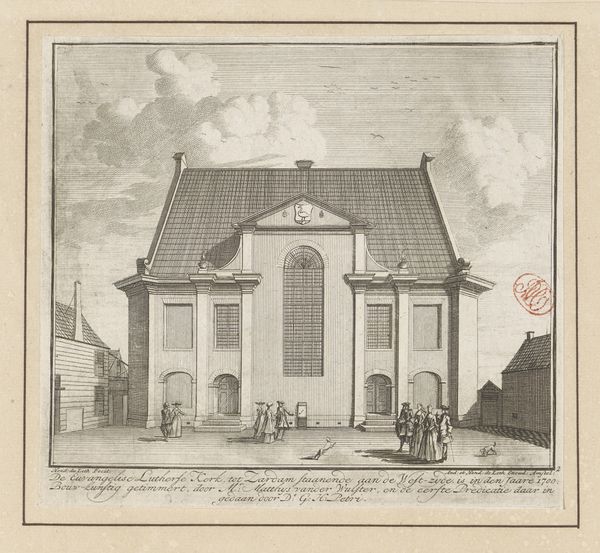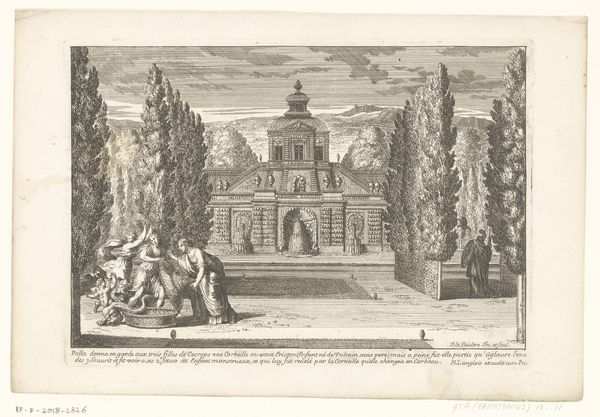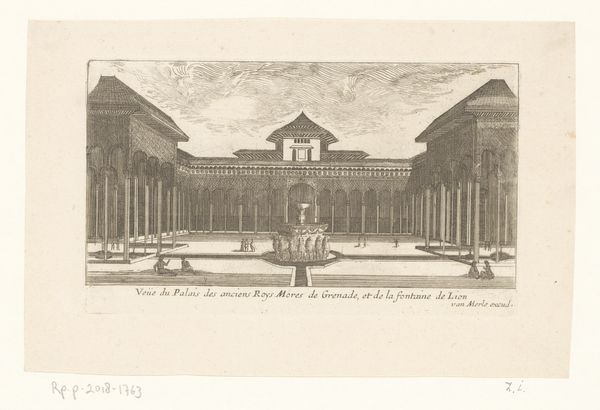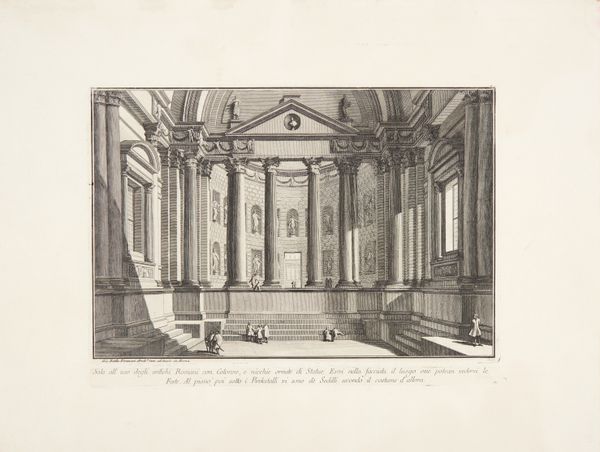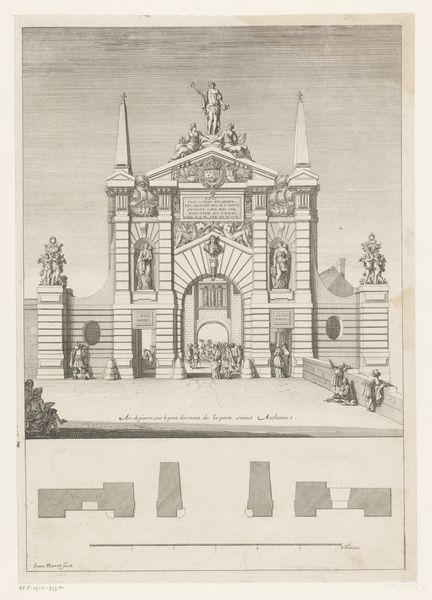
print, engraving, architecture
#
baroque
#
dutch-golden-age
# print
#
cityscape
#
engraving
#
architecture
Dimensions: height 250 mm, width 295 mm
Copyright: Rijks Museum: Open Domain
Curator: So, here we have a 1675 engraving, "Rand van de Grote Hagen," or "Edge of the Great Hedge," a partial view by Christiaan Hagen of the cloth hall. A classic Golden Age Dutch cityscape rendered as a print. Editor: Hmm, my first thought? It’s like a stage set! All very precise, very composed, but there’s this…artificiality about it. Like those little figures are just props to fill out the scene. You know? Curator: That precision speaks volumes, actually. These cityscapes weren't just pretty pictures; they were powerful statements about urban identity, commerce, and civic pride in the burgeoning Dutch Republic. The baroque elements, the symmetry, reinforce the idea of control and order, crucial values for a society finding its place on the world stage. The hall was an important center for quality control, with its location on the canal providing an accessible point of transport to other trading locations. Editor: Order, sure, but where's the mess? Where's the daily grind? The artist shows people gathered casually in front of the building and along the canal, but they’re mostly homogenous; it needs life! What's particularly interesting is how architecture interacts with identity – you look at this building and it immediately speaks to the social status and power. The Lakenhal still stands today, but functions now as a museum. It gives a place for us to reflect on the ways we interpret spaces and how those meanings morph with our relationship to culture. Curator: The lack of visible "mess," as you put it, is intentional, even ideological. These idealized scenes omitted elements considered undesirable, projecting a specific image of the city that aligned with the values of the ruling merchant class. We are left with what theorist Benedict Anderson called 'imagined communities', projecting that the city operates like an ideal clock; the only flaw lies in our viewpoint. Editor: Point taken. It’s easy to judge art from a 17th-century perspective with 21st-century eyes. Okay, so beyond the social politics, is there a personal resonance here? Maybe a sense of ambition in the way the architectural scale diminishes the small human figures? The building is certainly majestic. Curator: Definitely! Thinking about the print's circulation—who was this image made for, who was consuming it? Probably members of that very class. But this artistic depiction also provided a sort of feedback loop reinforcing those power dynamics between who controls land and capital. It’s not just about buildings, it's about the people within them. Editor: It gives so much to consider about who built them, the buildings themselves and the people they were designed to serve. Not a bad legacy for a small print.
Comments
No comments
Be the first to comment and join the conversation on the ultimate creative platform.
